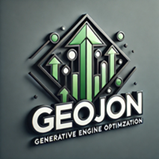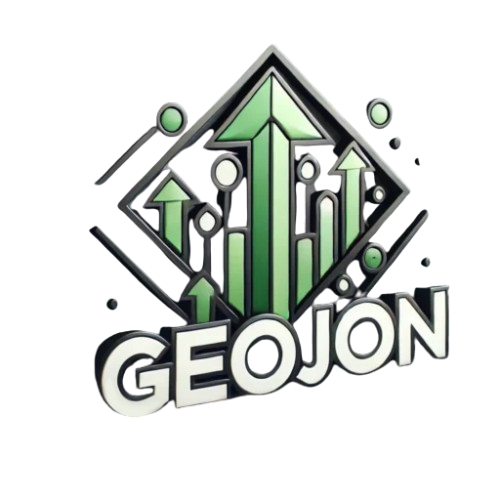
Key Takeaways
- Google AIO utilizes AI-driven overviews to synthesize content, shifting the focus from traditional SEO towards a more holistic emphasis on content quality and authority.
- Establishing authority through well-structured content that follows E-A-T principles is paramount to achieving visibility in AI overviews.
- Implementing structured data and schema markup is essential for helping Google AIO understand and extract relevant snippets from your content.
- Regularly updating content, understanding user intent, and creating topic clusters ensure comprehensive coverage and increased visibility.
- Leveraging analytics to monitor performance and making continuous improvements is critical to maintaining search visibility in the evolving landscape of Google AIO.
Time to Read: ~25 Minutes
The emergence of Google AIO (AI Overviews) has fundamentally redefined the dynamics of search visibility. Unlike traditional SEO, which primarily focused on optimizing keywords and backlinks to secure higher rankings in search engine results, Google AIO demands a nuanced understanding of generative AI, user intent, and information synthesis to truly stand out. This comprehensive guide delves into the methods required to achieve the highest level of search visibility in Google AIO, touching on various elements such as content authority, quality, structured data, user engagement, and evolving SEO best practices. By synthesizing insights from the latest research, industry trends, and SEO expertise, this guide aims to offer an in-depth roadmap for thriving in this AI-driven search landscape.
Understanding Google AIO and Its Impact on Search Visibility
Google AIO, an integral component of Google’s evolving search ecosystem, employs advanced AI techniques to generate overviews and summaries that comprehensively address user queries. Instead of the traditional list of blue links, users now encounter AI-generated overviews that synthesize content from various reputable sources into a cohesive response. This transformation necessitates a proactive approach by businesses to ensure their content appears prominently within these AI-generated answers.
At its core, Google AIO aims to deliver the most informative and pertinent answers possible, often presenting synthesized information derived from multiple sources. This setup significantly changes the dynamics of search visibility, as users may find their queries fully answered by an overview without needing to click through to a website. As such, it is crucial for businesses to ensure that their content is not only considered by Google’s AI but also presented in a manner that prompts further engagement.
1. Content Authority and Expertise in Google AIO
One of the most critical factors in securing visibility within Google AIO lies in establishing content authority. Generative AI models, like those powering Google AIO, rely heavily on well-structured, authoritative, and credible content to generate overviews. The authority and expertise of content are measured by signals that Google traditionally uses to evaluate quality, namely the E-A-T (Expertise, Authoritativeness, Trustworthiness) framework.
1.1 Establishing Content Authority Through E-A-T
Content authority begins with E-A-T. Google’s AI prioritizes sources that demonstrate a high level of expertise, especially for queries related to sensitive topics like health, finance, or major decision-making. Websites that provide detailed author profiles, showcase qualifications, and acquire backlinks from other authoritative sources have an advantage in this area.
Consider, for instance, the Mayo Clinic. Its content about health topics is consistently featured in Google AIO overviews because it clearly exhibits expertise (content created by qualified medical professionals), authority (a well-known healthcare institution), and trustworthiness (up-to-date and scientifically supported information). Smaller healthcare providers can emulate this by including detailed author biographies, external links to reputable sources, and by consistently updating content to reflect the latest accurate information.
To achieve a similar level of visibility, consider the following actions:
- Develop comprehensive content that effectively addresses user intent, providing both breadth and depth of information.
- Showcase the credentials of authors, particularly for specialized topics, to help Google recognize the content as a credible source for generative answers.
- Foster collaborations with authoritative organizations to improve backlinks and build social proof, thus enhancing the content’s perceived authority.
1.2 Creating In-Depth and Comprehensive Content
The Google AIO model generates overviews by drawing from multiple, high-quality sources. This means that the depth and comprehensiveness of your content are paramount. By offering in-depth content, Google AIO can reference different sections of your article to construct a more thorough answer. Unlike traditional SEO, which often emphasized keyword density, content creators must now ensure that their material covers a subject comprehensively and addresses multiple dimensions of user queries.
For example, a website offering information on “how to start a small business” should go beyond basic steps to include detailed insights on funding options, marketing strategies, compliance requirements, and common pitfalls. Addressing a topic in such depth allows Google AIO to pull relevant information from various sections, improving the likelihood that your website is referenced in the generated overview.
Comprehensive content that anticipates and answers a broad range of related questions is more likely to be featured in AI overviews. Achieving this involves creating in-depth guides, including robust FAQ sections, and developing content clusters that interlink related articles.
By covering all possible facets of a user’s query, you not only satisfy user intent but also align effectively with Google AIO’s preference for holistic content.
This flow shown below highlights a broader and deeper coverage of topics significantly enhances the likelihood of being featured in AI overview
- User Query → Relevant Comprehensive Article
- Comprehensive Article → Multiple Topic Sections Covered (e.g., Funding, Marketing, Compliance)
- Multiple Sections → Opportunities for Google AIO to Extract Relevant Snippets
- Extracted Snippets → Featured in AI Overviews for Enhanced Visibility
2. Structured Data and Content Markup

Structured data and schema markup are vital components for ensuring that your content is featured in Google AIO’s AI-generated overviews. Google’s AI relies on structured data to discern the context and content of your webpage and draw relevant snippets for overviews. Even well-crafted content may be overlooked by Google’s AI if it lacks clarity due to the absence of structured data.
2.1 Importance of Schema Markup
Schema markup is a form of microdata that helps search engines better understand the context of your content. By implementing schema markup, you enable Google AIO to clearly identify key components of your webpage, such as product details, reviews, FAQs, or event listings. This allows Google to easily extract pertinent parts of your content to feature in AI overviews.
For example, FAQ schema can directly inform Google AIO’s generative responses by clearly delineating questions and answers. If you manage an eCommerce site, using product schema can help Google comprehend important product features like availability, pricing, and reviews—thus making it more likely that this information will be featured in generative responses.
Example: Suppose you own an online gardening store and have authored a guide on “best fertilizers for vegetable gardens.” Including schema markup for FAQs such as “What nutrients do tomatoes need?” or “How often should fertilizer be applied?” sends clear signals to Google’s AI about the specific questions your content can answer, thereby increasing its chances of being incorporated into an overview.
2.2 Optimizing Structured Data for Google AIO
It is not enough to simply implement structured data—optimizing it for accuracy and clarity is equally crucial. Errors in schema markup can confuse Google’s AI or result in your content being disregarded altogether. To ensure your structured data is effective:
- Use Google’s Structured Data Testing Tool: Validate your markup to ensure it is correctly implemented and fully understood by Google.
- Prioritize High-Value Content: Apply structured data to content types that hold significant value, such as FAQs, product pages, reviews, and instructional guides. These types are often utilized by Google AIO for generating informative answers.
- Maintain Content Consistency: Ensure the information referenced by your structured data aligns perfectly with the visible content on your webpage. Inconsistencies can harm your credibility and diminish your chances of being featured in overviews.
Chart: Impact of Schema Quality on Google AIO Visibility
The following bar chart illustrates how implementing high-quality schema can dramatically increase your content’s chances of being featured in Google AIO overviews:
- High-Quality Schema Markup → 85% Likelihood of Inclusion
- Moderate-Quality Schema Markup → 50% Likelihood of Inclusion
- No Schema Markup → 20% Likelihood of Inclusion
This chart underscores the significance of investing in high-quality schema markup to enhance visibility in AI overviews.
3. User Engagement and Content Freshness
Google AIO also assesses content quality based on user engagement signals and the freshness of the information. AI overviews are generated to provide the most relevant and current data possible. Therefore, content that attracts high user engagement and is consistently updated is more likely to be featured in AI overviews.
3.1 Enhancing User Engagement
User engagement metrics—such as dwell time, click-through rate (CTR), and bounce rate—are critical determinants in whether your content is included in a Google AIO overview. The reasoning is simple: content that keeps users engaged is likely valuable, and Google’s AI favors content that has demonstrated its utility to users.
To improve user engagement:
- Enhance Content Readability: Utilize short paragraphs, strategic bullet points, and subheadings to make content more accessible.
- Incorporate Multimedia Elements: Include relevant images, videos, infographics, or even interactive tools to enrich the content. Multimedia not only enhances engagement but also provides supplementary elements that Google AIO can use for its overviews.
- Use Internal Links Effectively: Strategically linking to related articles or product pages encourages users to explore further, thereby improving engagement metrics. Google AIO tends to favor sites that guide users through comprehensive, interconnected content.
3.2 Keeping Content Fresh and Relevant

Content freshness is a key ranking factor for Google AIO, particularly for fast-changing fields like technology, finance, or healthcare. Regularly updating your content signals to Google that it remains relevant, thereby improving its chances of being featured in an AI-generated overview.
For example, an article titled “Top SEO Strategies for 2023” should be updated continuously with new statistics, insights, and developments to remain pertinent. Google AIO prefers content that is kept current, and this ongoing relevance will enhance your visibility.
Tools like Google Analytics can help you monitor your high-performing content and determine when updates are necessary. Adding new statistics, examples, or refining methods ensures your content remains fresh and competitive.
4. The Role of User Intent and Topic Clustering
Another fundamental component of gaining visibility in Google AIO is understanding and satisfying user intent. Unlike traditional search engines, which simply offer a list of links for users to explore, Google AIO aims to provide direct, succinct answers to users’ questions. Understanding user intent is therefore key to creating content that will be selected by Google AIO.
4.1 Understanding and Addressing User Intent
User intent can generally be categorized into informational, transactional, navigational, and commercial investigative types. Google AIO strives to cater to all of these intents by providing an accurate, synthesized answer. Therefore, ensuring that your content aligns with these diverse intents is critical to success.
Take, for example, the query “best laptops for graphic design.” The user intent here is informational with a tilt towards commercial investigation. Content that offers detailed comparisons of laptops, feature breakdowns, and purchasing options will best fulfill this intent. Google AIO can then draw from multiple sections to generate an informative overview that meets the user’s needs.
To align with user intent, ensure each content piece has a clear objective and fulfills a specific user need. For informational queries, consider long-form guides and FAQ sections, while for transactional searches, detailed product pages and reviews work well.
4.2 Topic Clustering for Greater Visibility
Topic clusters involve grouping related content around a central pillar page, which not only benefits traditional SEO but also aligns well with Google AIO’s preference for comprehensive coverage. A pillar page acts as an authoritative source on a broad subject, while the supporting cluster content delves into specific subtopics. Interlinking these cluster pages with the pillar page signals to Google that your site has deep expertise on the topic.
For example, a home improvement site could have a pillar page on “Kitchen Renovation.” Supporting content might include topics like “Choosing the Right Cabinets,” “Budgeting for a Kitchen Remodel,” and “Best Lighting for Kitchen Spaces.” This kind of comprehensive and interconnected content structure increases the likelihood that Google AIO will reference different pieces of your content in its overviews.
5. Leveraging Analytics and Continuous Improvement
Achieving visibility in Google AIO is not a one-time effort—it demands continuous refinement and improvement. Leveraging analytics to understand how users interact with your content and identify which topics generate interest is key to optimizing your approach.
5.1 Using Analytics to Inform Content Strategy
Tools like Google Analytics provide crucial insights into content performance—highlighting which pages drive the most engagement, how users find your content, and areas where users drop off. This data can reveal what resonates with your audience and where improvements are needed.
For example, if an article on “Best Digital Cameras for Beginners” has a high bounce rate, it may indicate that the content does not align with user expectations. Perhaps adding comparison charts or customer testimonials could make it more engaging. Conversely, content that drives high engagement can serve as a model for future articles.
5.2 Tracking Google AIO Performance
Tracking performance in Google AIO is different from traditional SEO rankings. Although there aren’t specific visibility metrics for Google AIO, monitoring organic traffic, engagement metrics, and featured snippet appearances can provide a sense of how well your content is performing in AI overviews. Tools like Ahrefs, Moz, or Semrush can help monitor your site’s visibility and identify optimization opportunities.
Experimentation is also key—test different content formats such as multimedia, structured articles, and in-depth guides to determine what works best for generating AI-driven visibility.
Frequently Asked Questions (FAQs)
1. How can I improve my content’s visibility in Google AIO?
To enhance visibility, create authoritative, comprehensive content, implement structured data to enhance content clarity, and regularly update content to ensure it remains fresh and relevant.
2. What role does structured data play in Google AIO visibility?
Structured data helps Google AIO understand the context of your content more precisely, thereby increasing the chances of your content being featured in AI-generated overviews. Implementing schema for FAQs, products, and reviews is particularly helpful.
3. How does user engagement affect Google AIO visibility?
High user engagement, measured by metrics such as dwell time and CTR, suggests that your content is valuable. This increases the likelihood of your content being included in Google AIO overviews.
4. Why is content freshness important for Google AIO?
Google AIO prioritizes delivering up-to-date information. Regularly updating your content with new data and insights ensures that it remains relevant, increasing the likelihood that it will be featured in AI-generated responses.
5. How do topic clusters enhance my chances of appearing in Google AIO overviews?
Topic clusters provide comprehensive coverage of a subject, with a central pillar page linked to detailed subtopics. This depth and interconnectivity demonstrate expertise, making it more likely that Google AIO will reference your content in its overviews.
In conclusion, mastering search visibility in Google AIO requires a multifaceted strategy. Building content authority, implementing structured data, enhancing user engagement, clustering topics, and maintaining continuous optimization are all vital components for achieving prominence in AI-generated overviews. By understanding how Google AIO synthesizes information and by aligning content creation with these preferences, businesses can navigate the evolving landscape and secure a competitive edge.
Search
Recent Posts
ChatGPT Search Goes Account-Free: The Future of
- February 7, 2025
- 13 min read
Strategies to Dominate Consumer Searches with AI
- January 13, 2025
- 15 min read
Boost Visibility: Integrate GEO with SEO Strategies
- January 6, 2025
- 6 min read








